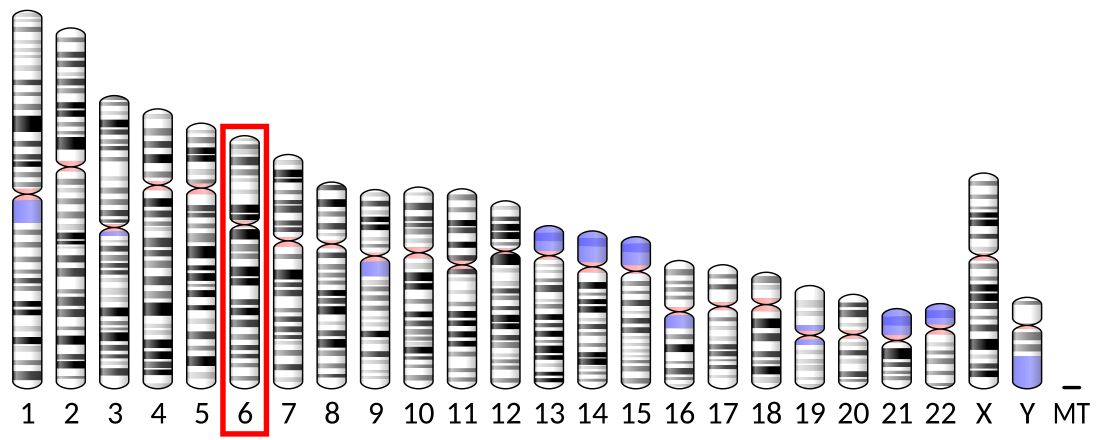T-complex 1
Protein-coding gene in the species Homo sapiens From Wikipedia, the free encyclopedia
In humans, the gene T-complex 1, a.k.a. TCP1, encodes the protein TCP-1[a], a.k.a. T-complex protein 1 subunit alpha.[5][6][7]
Function
This gene encodes a molecular chaperone that is a member of the TRiC complex. This complex consists of two identical stacked rings, each containing eight different proteins. Unfolded polypeptides enter the central cavity of the complex and are folded in an ATP-dependent manner. The complex folds various proteins, including actin and tubulin. Alternate transcriptional splice variants of this gene, encoding different isoforms, have been characterized.[7]
Interactions
T-complex 1 has been shown to interact with PPP4C[8][9] and HDAC3.[10] CCT also directly interacts with lectin type oxidized LDL receptor-1 (LOX-1) while its ligand oxidized low density lipoprotein (OxLDL) disassociates CCT from LOX-1.[11]
Notes
- The term "TCP-1" is variously expanded as "T-complex protein 1" and "tailless complex polypeptide 1". The "T-complex" is the same as tailless complex, a CCT locus associated with tail length in mice.
References
Further reading
Wikiwand - on
Seamless Wikipedia browsing. On steroids.







